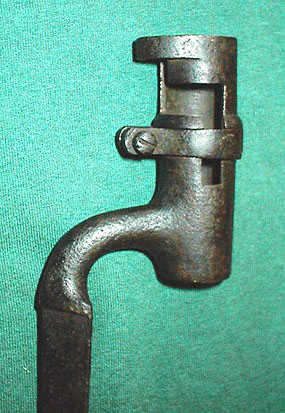"3-Band" Enfield
Socket Bayonet
(aka Pattern 1853 Enfield
Infantry "Long-Rifle" Bayonet)


This is a socket bayonet manufactured from the period of 1853 to about 1870. They were in service - in some form or fashion - until about 1875.
They are typically British in design in that they have a blade "shoulder" and are shallow fullered, whereas American bayonets of the period were without a shoulder and had very deep fullers
that extended out the back of the blade.
These are attached by fitting them over the barrel muzzle, and fastened into position by means of a mortise slot and locking ring.
All metal construction.
These were designed to fit the .577" caliber Enfield "3-band" Rifled Infantry Muskets of the period.
On this specimen: blade length is about 20-1/2" and muzzle ring diameter is ~0.79" (internal); socket length is ~3".
Scabbards were leather with brass throat and drag; leather body is without a sheet-metal - or wooden - internal liner as is commonly found on later British-pattern socket
bayonet scabbards.
These bayonets were used extensively - both sides - in the American Civil War.
Some differences in common British socket bayonets:

